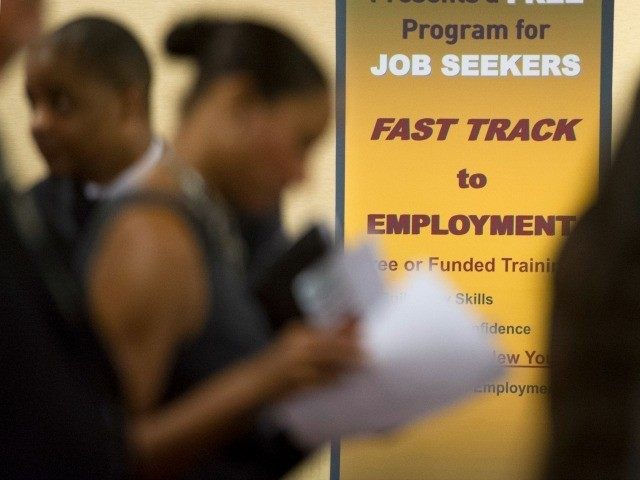The most alarming thing about September’s big-miss jobs report is the lack of positive spin from the usual suspects. Normally we’d hear a chorus of warnings about “reading too much” into a single report.
Many of those singing in the chorus would be spinmeisters who were only too happy to read too much into the occasional decent report, of course. We would usually hear murmurs about strong underlying fundamentals and signs of better days ahead.
Not this time.
Analysts were expecting well over 200k new jobs for September – which isn’t really all that great, but at least it’s enough to keep pace with population growth. Instead, we got 142k new jobs, the past few months were revised downward, wage growth remained flat, and the labor force shrank by another hair-raising 350k, knocking workforce participation down to 62.4 percent.
The old saw about unexpectedly cold winters – as if winter was never cold before Barack Obama took office – crushing job growth over half a year later finally reached its sell-by date. Old Man Winter made a brief, furtive appearance in the gloomy analysis of Neil Irwin at the New York Times, who noted there weren’t really any “silver linings” in the September jobs report and ruled out the usual excuses by saying “we don’t even have a major snowstorm of other weird weather event to blame,” but gamely suggested that some previous ugly economic news “did coincide with some nasty weather patterns.”
Irwin mentions that the poor jobs report is consistent with a roughly simultaneous report from the Institute of Supply Management that “suggested United States manufacturing slowed to a standstill in September.” That’s bad news for a number of reasons, including the difficult of cranking manufacturing back up after it’s stood idle for a while.
Another common theory is that bad global economic news is pushing the U.S. job market down. “The U.S economy is really buckling under the pressure of a global economic slowdown,” ventured California State University economics professor Sung Sohn, as quoted by CNN Money. The article goes on to mention China’s economic crisis, pressure on developing economies, and slow growth around the globe.
It’s certainly true that economies are connected on a global scale, but one of the reasons to avoid dead-end low-growth policies like Obamanomics is to make our national economy strong enough to weather global slowdowns better. Without robust growth during moments of opportunity, there’s nothing in the tank to propel us through storms of bad news Americans cannot directly control. It’s not easy to see where good global economic news will be coming from any time soon – Europe’s going to be busy with this little “refugee” business for years to come, and the refugees trudged into an EU that was already teetering on the edge of systemic meltdown.
Over at ZeroHedge, which is consistently pessimistic about the Federal Reserve’s money-printing strategy, there are some rueful chuckles about how the currency tricks sustaining this long, flaccid, phony “recovery” were almost terminated based on a few months of “decent” job reports that just got revised down into the doldrums.
Instead of pinning monetary policy to these highly volatile and oft-revised jobs reports, which have a tendency to conceal ugly truths like much of the past year’s “growth” coming from temporary and part-time work, ZeroHedge suggests looking at business sales and inventories as a more reliable indicator. And that indicator is beginning to sound like a pre-recession alarm bell, as sales flatten and inventories accumulate. If sales aren’t being made, where is the incentive for robust job growth?
The Fed is still talking about hiking rates early next year, but with the employment trend line curving down, labor-force reduction the only reason the “official” unemployment rate is staying put, and flat wage growth telling us we aren’t seeing the surge of job quality that would normally precede a round of vigorous job creation, that seems overly optimistic. This year’s job reports were supposed to give us hope that disaffected workers were returning to the labor force and looking for work, but it looks like they gave up and dropped right back out of the force again. The obviousness of that grim conclusion might be what’s choking off all the usual excuse-making and silver-lining talk.
It’s stunning to consider our national debt was nearly doubled to “achieve” this limp non-recovery. What incredible pro-growth measures might we have undertaken, for far less cost? We’re not supposed to dwell on all the money squandered over the past few years, but we’re supposed to freak out and start yelling about the deficit as soon as presidential candidates suggest pro-growth tax cuts.
This moment of global weakness is precisely the moment we should seize by junking the Big Government crap that’s been holding our economy back, because the United States still has the vision and capital – including untapped human capital – to surge back into the lead. We just have to stop accepting that this is as good as it gets, and all we deserve. Neither of those assertions is remotely true.

COMMENTS
Please let us know if you're having issues with commenting.